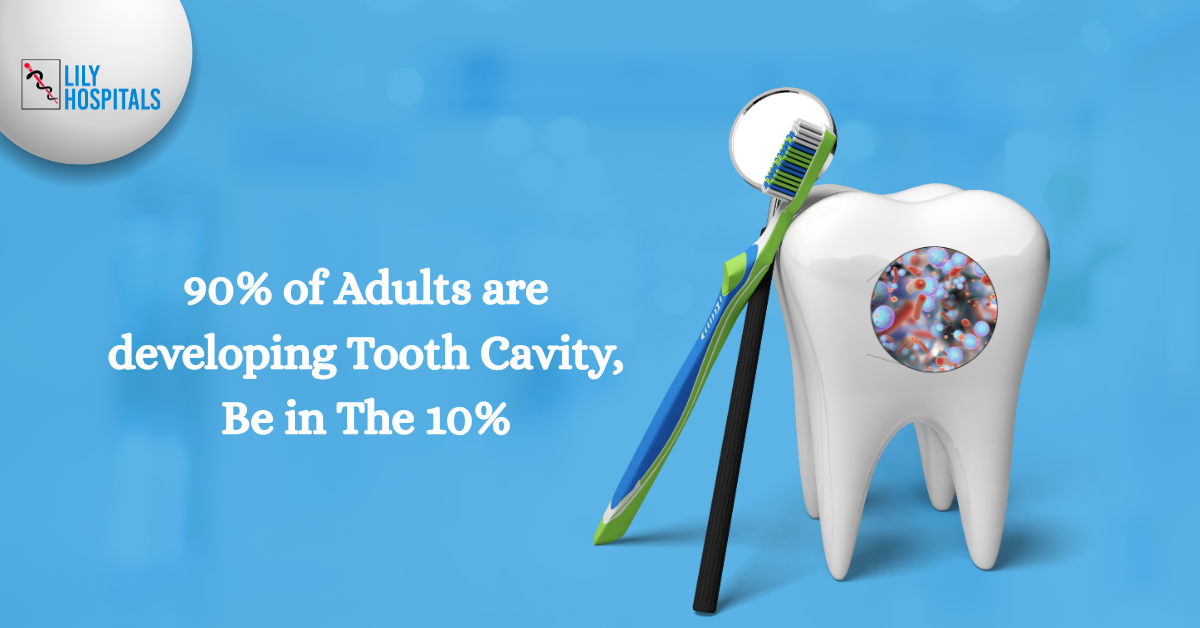
Did you know that approximately 90% of adults worldwide develop at least one tooth cavity during their lifetime? This staggering statistic from the National Institute of Dental and Craniofacial Research reveals a sobering truth: tooth decay is one of the most common diseases affecting humanity.
However, there’s hope. The remaining 10% of adults who maintain cavity-free teeth throughout their lives aren’t just genetically blessed – they follow specific practices and lifestyle choices that protect their oral health.
Understanding how to join this exclusive 10% isn’t just about vanity or avoiding dental bills. Poor oral health has been linked to serious conditions including heart disease, diabetes, and stroke. By learning the secrets of cavity prevention, you’re not just protecting your smile – you’re safeguarding your overall health and quality of life.
Understanding Tooth Cavities: Know Your Enemy
What Are Tooth Cavities?
Tooth cavities, also known as dental caries or tooth decay, are permanently damaged areas in the hard surface of your teeth that develop into tiny openings or holes. These form when bacteria in your mouth produce acid that erodes tooth enamel, the protective outer layer of your teeth.
The process begins with plaque formation – a sticky film of bacteria that constantly forms on your teeth. When you consume sugars and starches, these bacteria feed on them and produce acid as a byproduct. This acid attacks your tooth enamel, gradually weakening and eventually creating holes.
The Cavity Formation Process
Understanding how cavities develop helps explain why prevention strategies work:
Plaque Formation: Bacteria accumulate on teeth within hours of cleaning
Acid Production: Bacteria convert sugars and carbohydrates into acid
Demineralization: Acid dissolves minerals in tooth enamel
Cavity Formation: Continued acid exposure creates holes in teeth
Progression: Without intervention, cavities grow larger and deeper
Risk Factors for Tooth Decay
Several factors increase your likelihood of developing cavities:
- Diet: Frequent consumption of sugary and acidic foods and drinks
- Poor Oral Hygiene: Inadequate brushing and flossing
- Dry Mouth: Reduced saliva production
- Genetics: Some people are naturally more susceptible
- Age: Both very young and older adults face higher risks
- Medical Conditions: Diabetes, eating disorders, and acid reflux
- Medications: Certain drugs that cause dry mouth
The 10% Club: Characteristics of Cavity-Free Adults
-
Superior Oral Hygiene Habits
The cavity-free 10% maintain exceptional oral hygiene routines that go beyond basic brushing. They understand that consistency and technique matter more than expensive products. These individuals typically brush twice daily using proper technique, floss regularly, and use additional preventive measures like mouthwash or water flossers.
-
Dietary Discipline
Members of the 10% club demonstrate remarkable discipline in their dietary choices. They limit sugary snacks and beverages, avoid frequent snacking throughout the day, and choose tooth-friendly foods. When they do consume potentially harmful foods, they practice damage control techniques like rinsing with water afterward.
-
Proactive Dental Care
Rather than waiting for problems to develop, cavity-free adults maintain regular dental checkups and cleanings. They view preventive dental care as an investment rather than an expense, addressing potential issues before they become serious problems.
How To Prevent Dental Caries
-
Always brush properly
Effective brushing requires more than just moving a toothbrush around your mouth. The cavity-free 10% follow these principles:
Choose the Right Toothbrush: Select a soft-bristled toothbrush that fits comfortably in your mouth. Electric toothbrushes can be more effective at plaque removal, but manual brushes work well with proper technique.
Use Fluoride Toothpaste: Fluoride strengthens tooth enamel and helps reverse early stages of tooth decay. Use a pea-sized amount of fluoride toothpaste twice daily.
Perfect Your Technique: Hold your toothbrush at a 45-degree angle to your gums. Use gentle, circular motions rather than aggressive back-and-forth scrubbing. Brush for a full two minutes, spending equal time on all areas of your mouth.
Don’t Forget Your Tongue: Bacteria accumulate on your tongue, contributing to overall oral bacteria levels. Gently brush your tongue or use a tongue scraper to remove bacteria and freshen breath.
2. Ensure to floss daily
Flossing removes plaque and food particles from between teeth where toothbrushes can’t reach. The 10% understand that skipping floss is like washing only 65% of your body – you’re leaving significant areas uncleaned.
Proper Flossing Technique:
Use about 18 inches of floss, winding most around your middle fingers
Hold floss tightly between thumbs and forefingers
Guide floss between teeth using gentle rubbing motion
Curve floss around each tooth in a C-shape
Slide floss into the space between gum and tooth
Use clean sections of floss for each tooth
3. Strategic Eating for Dental Health
Your diet plays a crucial role in cavity prevention. The cavity-free 10% make strategic food choices that support oral health:
Cavity-Fighting Foods:
Dairy Products: Rich in calcium and phosphorus, which strengthen teeth
Leafy Greens: High in vitamins and minerals that promote oral health
Almonds: Provide calcium and protein while being low in sugar
Carrots and Celery: Natural teeth cleaners that stimulate saliva production
Green Tea: Contains compounds that fight bacteria and reduce inflammation
Foods to Limit or Avoid:
Sugary Snacks: Candy, cookies, and pastries feed harmful bacteria
Acidic Foods: Citrus fruits, tomatoes, and vinegar can erode enamel
Sticky Foods: Dried fruits and caramel cling to teeth
Refined Carbohydrates: White bread and chips convert to sugar quickly
Sugary Beverages: Soda, sports drinks, and even fruit juices
Timing Matters: The frequency of sugar exposure matters more than the total amount. It’s better to eat sweets with meals rather than as standalone snacks throughout the day.
4. Harness the Power of Saliva
Saliva is your mouth’s natural defense system, neutralizing acids and washing away food particles and bacteria. The 10% understand how to optimize their saliva production:
Stay Hydrated: Drink plenty of water throughout the day to maintain adequate saliva flow.
Choose Sugar-Free Gum: Chewing sugar-free gum after meals stimulates saliva production and helps neutralize acids.
Address Dry Mouth: If you experience chronic dry mouth, consult your dentist or physician. Various treatments and lifestyle changes can help increase saliva production.
5. Regular Professional Care
Professional dental care is non-negotiable for cavity prevention. The 10% maintain regular relationships with dental professionals and view prevention as an investment:
Biannual Cleanings: Professional cleanings remove tartar buildup that regular brushing and flossing can’t eliminate.
Regular Examinations: Dentists can identify and address potential problems before they become cavities.
Preventive Treatments: Fluoride treatments and dental sealants provide additional protection against decay.
Early Intervention: Addressing small problems prevents them from becoming major issues requiring expensive treatment.
In order to receive adequate professional care, visiting our dentist here at Lily Hospitals is non-negotiable for you.
Advanced Prevention Strategies
-
Fluoride: Your Teeth’s Best Friend
Fluoride is often called “nature’s cavity fighter” because it strengthens tooth enamel and can even reverse early stages of tooth decay. The 10% maximize fluoride’s benefits through:
- Fluoride Toothpaste: Using fluoride toothpaste twice daily
- Professional Fluoride Treatments: Regular applications during dental visits
- Fluoride Mouthwash: Additional protection for high-risk individuals
-
Dental Sealants: Extra Protection Where You Need It Most
Dental sealants are thin, protective coatings applied to the chewing surfaces of back teeth. These areas have natural grooves and pits that are difficult to clean and particularly susceptible to decay. Sealants can reduce tooth decay risk by up to 80% in treated teeth.
-
pH Balance and Acid Neutralization
The 10% understand the importance of maintaining a balanced pH in their mouths. After consuming acidic foods or drinks, they:
- Wait to Brush: Brushing immediately after acid exposure can damage softened enamel
- Rinse with Water: This helps neutralize acids and wash away food particles
- Chew Sugar-Free Gum: Stimulates saliva production to neutralize acids naturally
- Use Alkaline Foods: Incorporate foods that help neutralize mouth acids
Harmful Habits That Increases Dental Caries Risk
- Smoking and Tobacco Use: Reduces saliva production and impairs immune function
- Excessive Alcohol Consumption: Can lead to dry mouth and poor food choices
- Teeth Grinding: Can damage teeth and create areas susceptible to decay
- Using Teeth as Tools: Opening packages or bottles with teeth can cause damage
Conclusion
The journey to cavity-free living requires commitment, but the rewards – both financial and personal – are substantial. Start today by evaluating your current habits and implementing the strategies outlined in this guide. Remember, every day you delay beginning proper tooth decay prevention is another day you’re allowing harmful bacteria to gain ground in your mouth.
Take the first step today: schedule a dental appointment at Lily Hospital, upgrade your oral hygiene routine, and commit to the daily habits that will keep you in the healthy 10% for life. Your future self will thank you for the investment you make in your oral health today.
Lily Hospitals…. WE CARE
Frequently Asked Question
1. Can children develop cavities?
Yes, children can develop cavities due to the fact that they consume a lot of sugary foods, and substances.
2. How do I know if I have dental caries?
You will experience pain in the tooth, increased sensitivity to hot, cold or sweet foods, holes in the teeth, bad breath, amongst others.
3. Does having tooth decay require dental filling?
No, not all tooth decay requires dental filling, especially if it is in the early stage.
4. Can a filled cavity become a cavity again?
Yes, a filled cavity can become a cavity again if the fillings wear out, or cracks.


